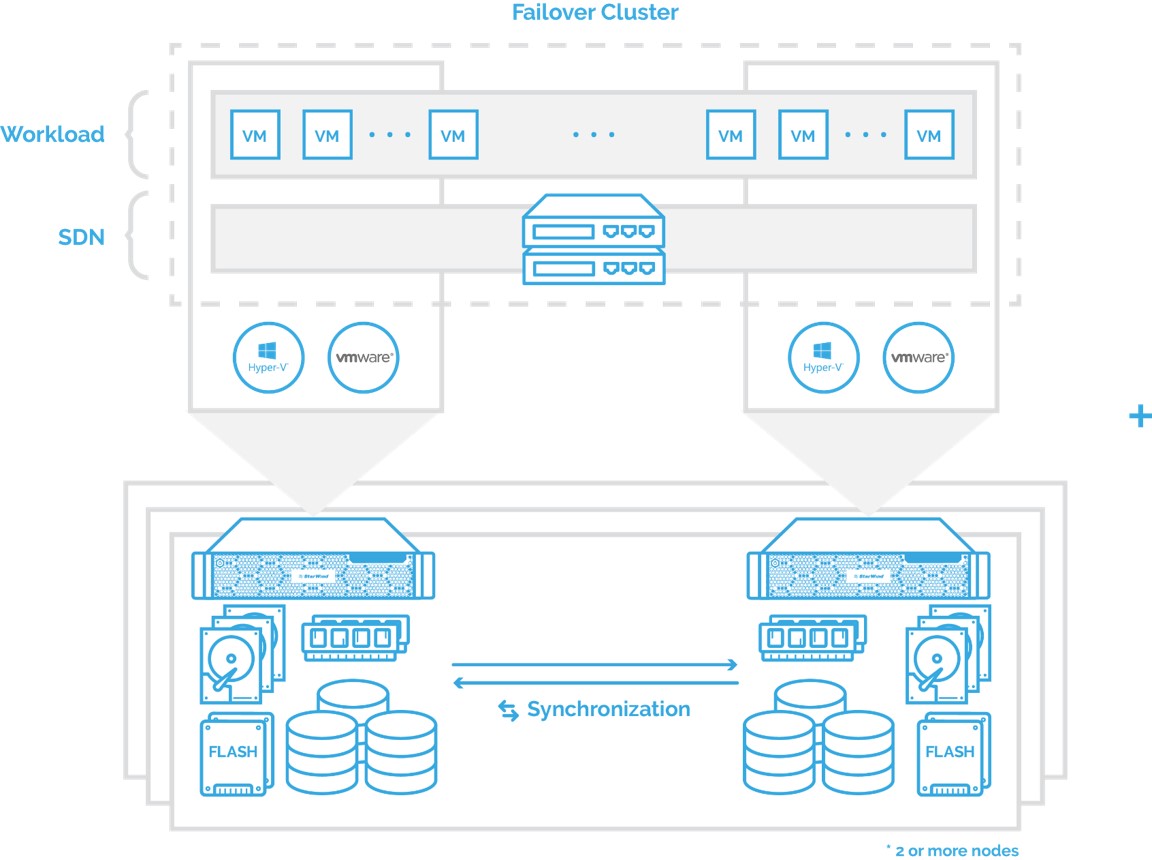
Write-Host "Exception $($_.Exception.Message)" -foreground red Write-Host "Synchronizing: $($syncPercent)%" -foreground yellow $syncPercent = $device.GetPropertyValue("ha_synch_percent") $syncState = $device.GetPropertyValue("ha_synch_status") $device = Add-HADevice -server $server -firstNode $firstNode -secondNode $secondNode -initMethod "Clear" You do not need to specify it for second node
#Starwind serial#
# Note: Second node always has the same serial ID. If it not specified StarWind Service will generate it. # 'SerialID' should be between 16 and 31 symbols. Possible values: 512 or 4096(May be incompatible with some clients!) bytes. $server = New-SWServer -host 10.10.0.54 -port 3261 -user root -password starwind So I decided to configure the solution from PowerShell: After the 30 days, you have to manage the solution from PowerShell. StarWind VSAN free provides a trial of 30 days for the management console. After this command is run, StarWind is installed and ready to be configured.
#Starwind install#
To install StarWind, I have run the following command:Ĭ:\temp\Starwind-v8.exe /SILENT /COMPONENTS="Service,service\starflb,service\starportdriver,StarWindxDll,StarWindXDll\powerShellEx /LICENSEKEY="c:\temp\ StarWind_Virtual_SAN_Free_License_Key.swk" StarWindXDll\powerShellEx: StarWindX PowerShell module.
#Starwind driver#
Service\starportdriver: StarPort driver that is required for operation of Mirror devices. Service\starflb: Loopback Accelerator, it is used with Windows 2012 and upper versions to accelerate iSCSI operation when client resides on the same machine as server. Service\haprocdriver: HA Processor Driver, it is used to support devices that have been created with older versions of the Software. Starwind-v8.exe /SILENT /COMPONENTS="comma separated list of component names" /LICENSEKEY="path to license file" To install StarWind from command line, you can use the following parameters: You can download StarWind VSAN free from this link. # Enable automatic claiming of iSCSI devicesĮnable-MSDSMAutomaticClaim -BusType iSCSIīecause I have installed nodes in Core edition, I install and configure components from PowerShell and command line. New-Volume -DiskNumber 1 -FriendlyName Data -FileSystem NTFS -DriveLetter E Get-service MSiSCSI | Set-Service -StartupType Automatic

# Set the iSCSI service startup to automatic Install-WindowsFeature FS-FileServer, Failover-Clustering, MPIO -IncludeManagementTools -Restart # Install FS-FileServer, Failover Clustering and MPIO

On both nodes, I run the following cmdlet to install the features and prepare a volume for StarWind: 3x vNIC (1x Management / iSCSI, 1x Hearbeart, 1x Synchronization)īoth nodes are deployed and joined to the domain.

1x OS disk (60GB dynamic) – Windows Server 2016 Standard Core edition.For the demonstration, I have used two virtual machines. This solution should be deployed on physical servers with physical disks (NVMe, SSD or HDD etc.). Then we’ll deploy a Failover Clustering with SOFS to deliver storage to Hyper-V nodes.
#Starwind how to#
In this topic, we’ll see how to deploy StarWind VSAN free on two nodes based on Windows Server 2016 Standard Core edition. It is an affordable solution for your Hyper-V VM storage. So you can deploy a converged SDS solution with Windows Server 2016 Standard Edition and StarWind VSAN free. On top of StarWind VSAN free, you can deploy a Microsoft Failover Clustering with Scale-Out File Server (SOFS). With this solution, you are able to deliver a highly available storage based on Direct-Attached Storage devices. StarWind VSAN free provides a free Software-Defined Storage (SDS) solution for two nodes.


 0 kommentar(er)
0 kommentar(er)
